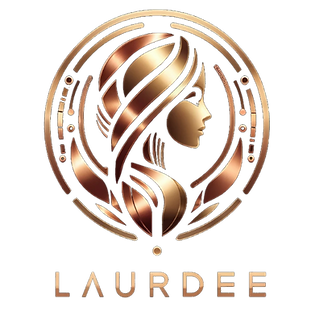Art: human vs machine
- Laurdee
- Sep 9, 2024
- 4 min read
Updated: Dec 16, 2024
Art: Human vs Machine
"Embracing AI and pushing boundaries"
BLOG AUDIO READER
From the earliest cave paintings to the most intricate Renaissance masterpieces, art has continually evolved, embracing new techniques and technologies along the way. Today, we find ourselves at the intersection of another significant transformation: the rise of AI- generated art. This new frontier in creativity has sparked a lively
debate among artists, critics, and enthusiasts alike. However, rather than viewing AI art as a threat to traditional art, we should embrace it as a complementary force that opens up new opportunities for artistic expression and collaboration.
Artists have always drawn inspiration from a multitude of sources. Vincent van Gogh, for example, was deeply influenced by Japanese woodblock prints, incorporating their bold lines and vibrant colors into his own unique style. Similarly, Pablo Picasso’s groundbreaking work in Cubism was inspired by African tribal masks. These examples demonstrate that finding inspiration from different art forms is not about duplication but about transformation and innovation. In much the same way, AI algorithms can analyze thousands of artworks, identifying patterns and styles that can be reinterpreted and reimagined. This process is akin to a traditional artist studying the works of the masters to develop their own voice.
To understand the relationship between AI art and traditional art, we can draw a parallel to the world of music. A song is composed of various notes, each contributing to the overall harmony. Musicians do not create these notes; they arrange them in a way that conveys a particular emotion or tells a story. Similarly, AI artists use data and algorithms as their notes, arranging them to produce a unique piece of art. Just as a symphony requires a conductor to infuse it with emotion and direction, AI art requires the vision of a human artist. AI provides the tools, but it is the artist who decides how to use them. This collaboration between human creativity and machine efficiency can result in artworks that are both technologically sophisticated and deeply emotive.
Throughout history, technological advancements have often been met with resistance, only to be later embraced as integral parts of everyday life. The transition from landlines to cell phones and from horse-drawn carriages to automobiles are prime examples. Initially, these changes were met with skepticism. However, as society adapted, these innovations opened up new possibilities and conveniences that were previously unimaginable.

The integration of AI into the art world is a natural progression. It represents an evolution rather than a revolution, enhancing traditional art practices rather than replacing them. AI can handle repetitive tasks, analyze vast amounts of data, and generate preliminary ideas, allowing human artists to focus on the more nuanced aspects of their work. This symbiotic relationship can lead to a more efficient creative process and the exploration of new artistic frontiers. One of the most exciting aspects of AI art is the new opportunities it creates for artists who may feel limited by traditional mediums or techniques, AI offers a vast playground for experimentation. At the heart of both AI and traditional art is a fundamental human process: the transformation of emotion into thought, thought into idea, and idea into creation.
Whether it’s a brushstroke on a canvas or a line of code in an algorithm, the essence of art lies in its ability to convey emotion and provoke thought. Both require skill, creativity, intuition, and a deep understanding of human emotions. As we look to the future, it’s clear
that AI and traditional art can coexist harmoniously and welcome AI as a powerful tool that can enhance and expand our creative capabilities. By embracing AI, artists can push the boundaries of what’s possible, exploring new styles, techniques, and ideas that were previously out of reach. AI can also serve as a bridge between different artistic disciplines, fostering collaboration and innovation. This fusion of skills and perspectives can lead to groundbreaking works of art that challenge our perceptions and inspire new ways of thinking.

In conclusion; as a traditional artist, I welcome AI art as an opportunity to enrich and expand the artistic landscape, similarly to when graphic art software programs became the new kid on the block. It wasn't long before skepticism turned into optimism and creators pushed forward to gain skills that contributed to the birth of another tool to embrace. Art has been, and always will be subjective. What the artist is conveying through their work is a shared perspective of human experiences. Whether or not a work of art taps a viewers core is left to chance. I believe by embracing this new technology, artists can explore new realms of creativity, build on the rich heritage of the past, and forge a future where human and machine collaborate to create something truly extraordinary to enrich our lives. Let's embrace AI art as a natural evolution in the ever-changing world of artistic expression, and all areas of life. In doing so, we open the door to a harmonious future where all forms of art and advancements are celebrated and cherished.
FREEBIE! The artwork on this page is available for you download and print for free on your home printer. Go to our quick and easy sign-up page by clicking 'Freebies' in the menu, or HERE , for access to our free
printable blog art.
ENJOY!












Comments